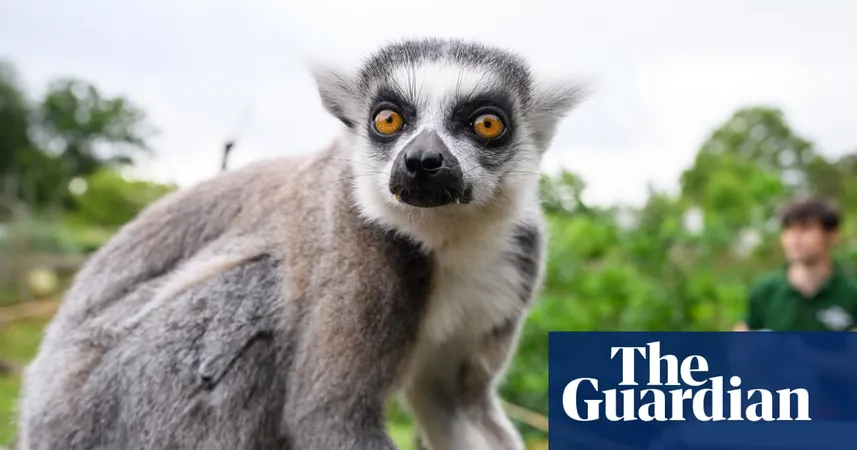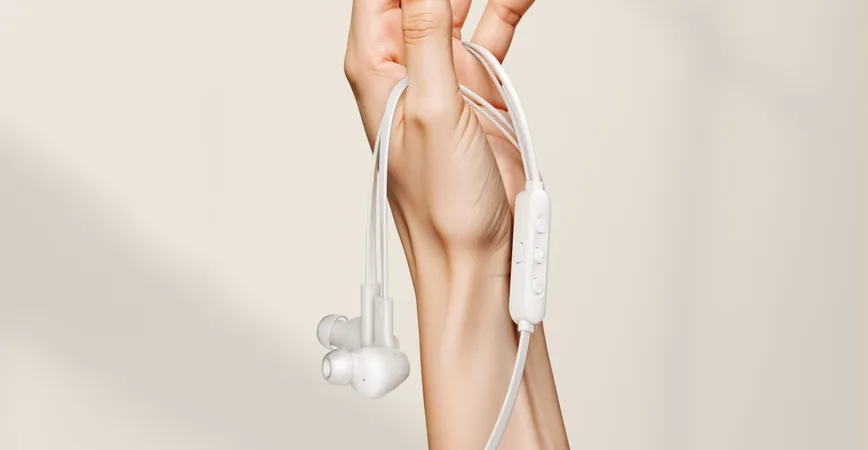
Unlocking the Link: Longer Thumbs Might Mean Bigger Brains in Primates!
2025-08-26
Author: Nur
A Surprising Discovery About Thumb Length and Intelligence
Forget everything you thought you knew about hand size — new research suggests that having longer thumbs is not just a quirky trait; it could be a sign of larger brains in primates!
Researchers at the University of Reading have uncovered fascinating evidence that hints at a co-evolution of the brain and manual dexterity in primates, suggesting that our evolutionary journey was influenced heavily by the way we use our hands.
Thumbs and Thinking: A New Evolutionary Scenario
Lead researcher Dr. Joanna Baker explained, "Imagine a primate or human that becomes more intelligent — this sparks the ability to plan actions and manipulate objects more efficiently. Those equipped with longer thumbs may have significantly outperformed their counterparts." This insight opens up a fresh perspective on how brain size and manual abilities were intertwined during evolution.
The Evolutionary Power of Opposable Thumbs
Humans aren't the only primates with opposable thumbs, but the study poses an intriguing question about the significance of thumb length across species. Dr. Baker noted, "A longer thumb generally grants you greater control and freedom to pick up and use small objects," which were essential for tool use—one of humanity's major evolutionary milestones.
The Eye-Opening Results of the Study
To find answers, the research team analyzed brain mass and thumb length across 94 primate species, from our ancient ancestors to modern lemurs. The findings, published in the journal Communications Biology, revealed a powerful trend: humans and many hominins boast thumbs that are disproportionately longer compared to their overall hand size.
As Baker stated, "Those with longer thumbs typically showcase increased brain size. When we compare our species to other primates, humans aren’t as unique after all — thumb length and brain size correlate across the board!"
A Unique Exception in Our Evolutionary Lineage
Interestingly, early hominin A. sediba was the lone exception, boasting an unexpectedly long thumb despite brain size considerations — a trait possibly linked to its arboreal lifestyle. This highlights the complexity of evolutionary adaptations.
The Neocortex Connection: Cognition and Control
Diving deeper into brain anatomy, researchers found that the neocortex, known for its roles in cognition and action planning, was significantly larger in primates with longer thumbs. Baker expressed her surprise, saying, "It was unexpected that this wasn’t driven by motor-control regions, like the cerebellum, typically associated with physical actions.”
More Than Just Thumb Length: The Full Picture
Despite these revelations, the study cautions against oversimplifying the relationship between thumb length and tool use. Dr. Baker explained, "We expected a distinct pattern among hominins that just wasn’t present." Further insights are needed to fully grasp the complexities of manual dexterity and brain evolution.
Supporting this notion, Dr. Fotios Alexandros Karakostis of the University of Tübingen remarked, "This emphasizes that hand and brain adaptations likely evolved together, but thumb length alone cannot fully capture the intricacies of how we evolved to manipulate tools and thrive as a species."
Final Thoughts: What This Means for Our Understanding of Evolution
This groundbreaking research sheds light on the fascinating interplay between our physical traits and cognitive abilities, revealing that evolution is a nuanced journey where even our thumbs tell a story of intelligence. What other surprises lie hidden in our biological history?



 Brasil (PT)
Brasil (PT)
 Canada (EN)
Canada (EN)
 Chile (ES)
Chile (ES)
 Česko (CS)
Česko (CS)
 대한민국 (KO)
대한민국 (KO)
 España (ES)
España (ES)
 France (FR)
France (FR)
 Hong Kong (EN)
Hong Kong (EN)
 Italia (IT)
Italia (IT)
 日本 (JA)
日本 (JA)
 Magyarország (HU)
Magyarország (HU)
 Norge (NO)
Norge (NO)
 Polska (PL)
Polska (PL)
 Schweiz (DE)
Schweiz (DE)
 Singapore (EN)
Singapore (EN)
 Sverige (SV)
Sverige (SV)
 Suomi (FI)
Suomi (FI)
 Türkiye (TR)
Türkiye (TR)
 الإمارات العربية المتحدة (AR)
الإمارات العربية المتحدة (AR)